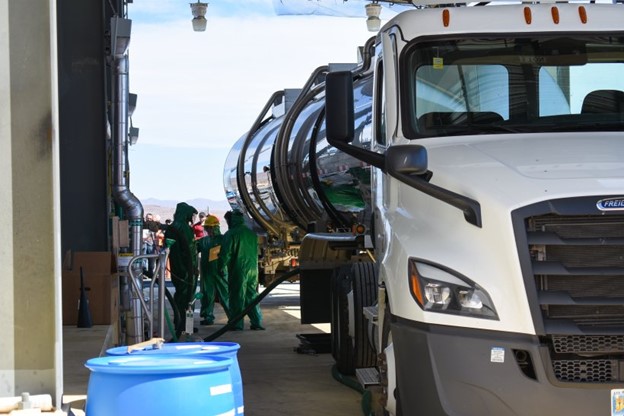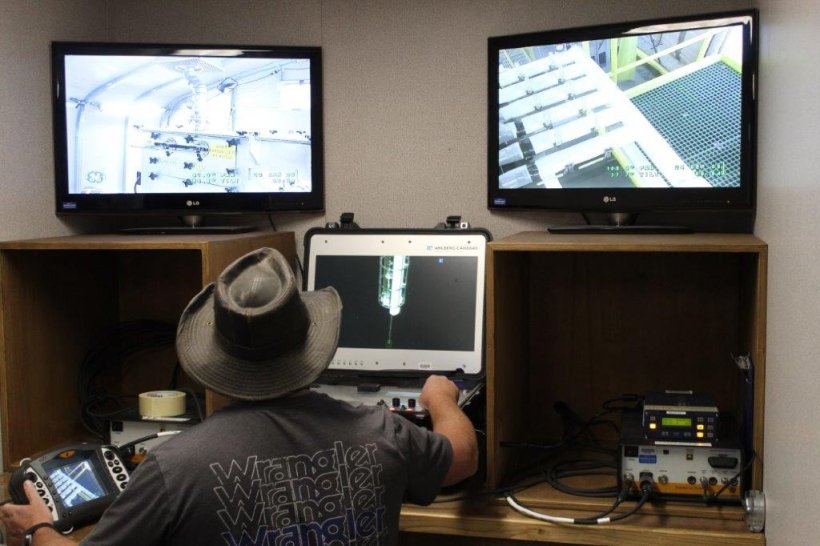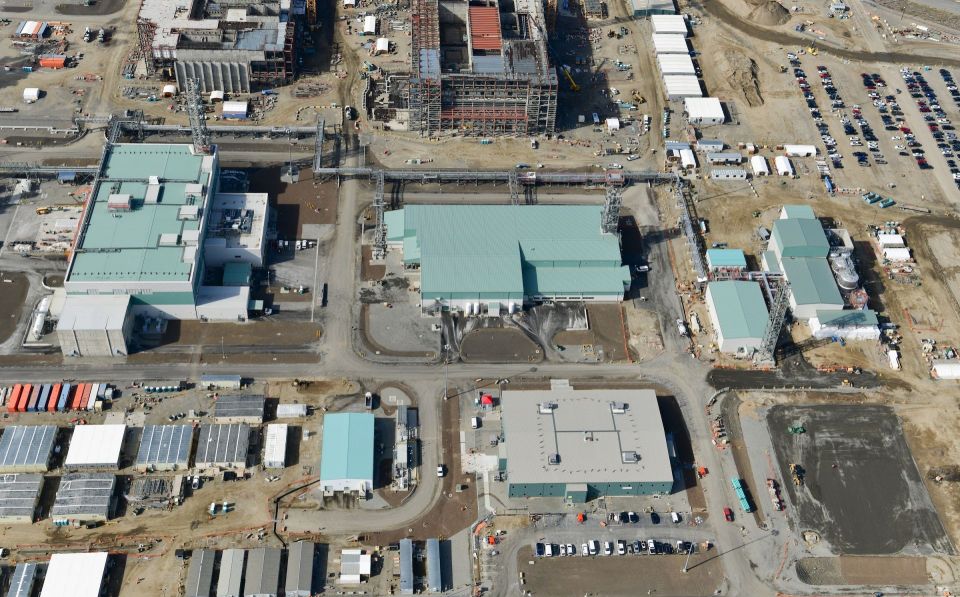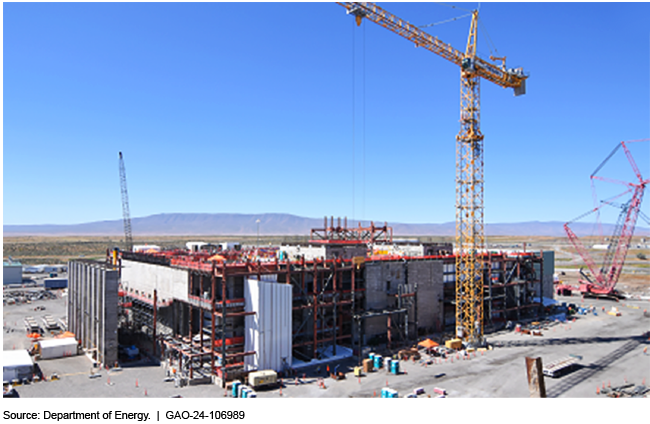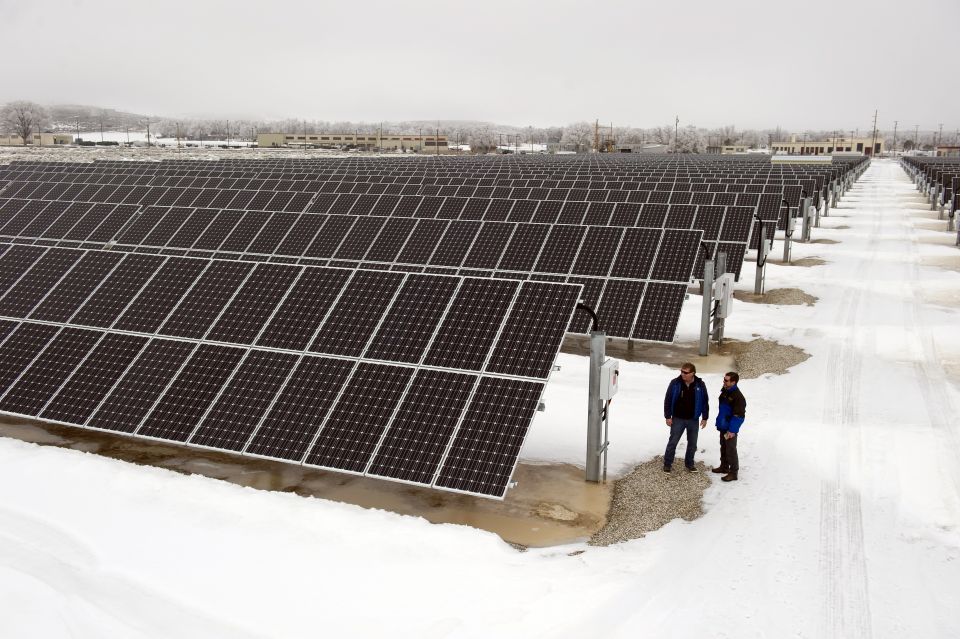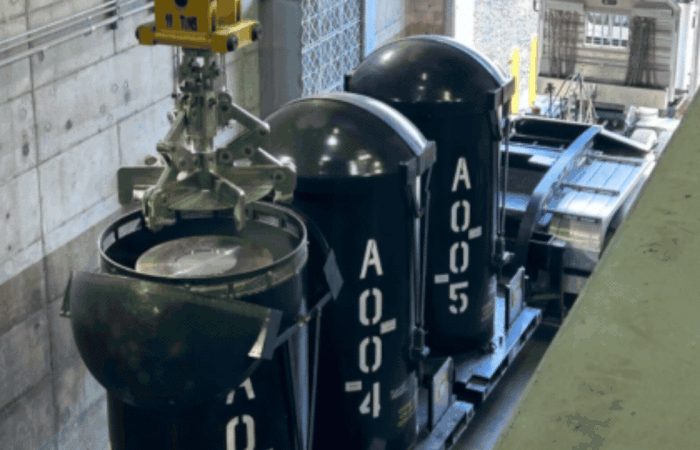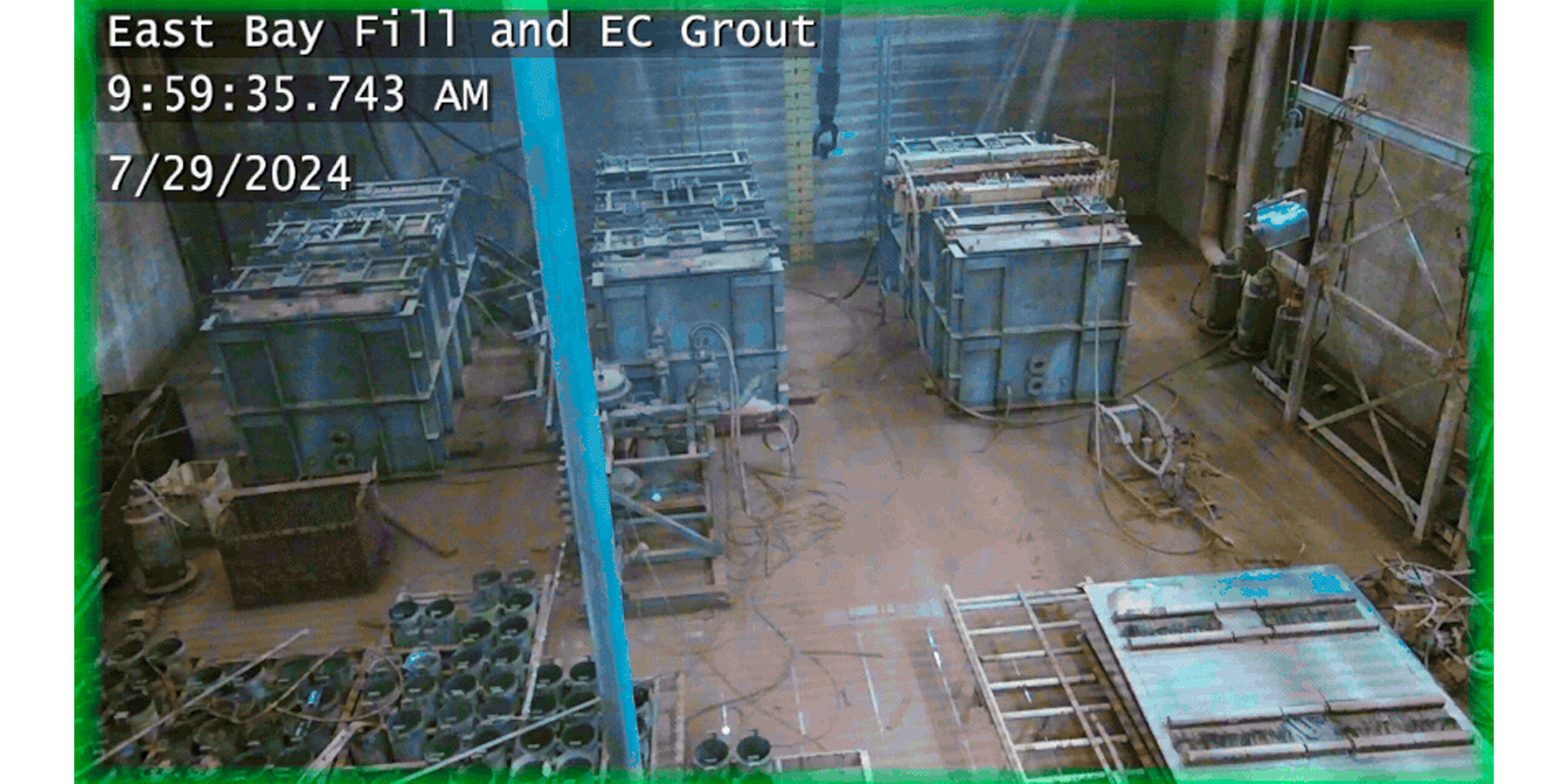Workers at the Hanford Site’s WTP unload a tanker truck carrying sodium hydroxide. (Photo: DOE)
Workers at the Department of Energy’s Hanford Site in Washington state recently unloaded a shipment of more than 10,000 gallons of sodium hydroxide delivered to the site’s Waste Treatment and Immobilization Plant (WTP). The liquid sodium hydroxide will be the first chemical fed into the plant’s melters to simulate Hanford’s radioactive and chemical tank waste.
“The delivery of sodium hydroxide is an important precursor to several months of testing using simulated waste, known as the cold commissioning phase,” said Mat Irwin, the DOE Office of Environmental Management’s acting assistant manager for the WTP project. “WTP crews will test the waste processing and exhaust treatment systems in the plant’s Low-Activity Waste Facility before introducing actual tank waste into the plant during hot commissioning.”
Prep work: According to the DOE, commissioning of the facility is an important step in preparing to vitrify, or immobilize in glass, 53 million gallons of waste from Hanford’s large underground tanks.
A second, longer-term use of sodium hydroxide will be to treat hazardous liquids coming from the facility’s exhaust treatment system and the system that treats liquids generated during the vitrification process.
The DOE noted that many industries use sodium hydroxide, commonly known as lye, as a versatile chemical. However, like other industrial chemicals, it must be treated as a hazardous substance. To ensure its safe handling on site, workers are required to follow strict safety protocols during its use, which includes storing it in an isolated tank at the WTP.
“Our team prepared for this delivery by implementing safety measures to ensure the safe handling, storage, and use of sodium hydroxide on site,” said Rick Holmes, Bechtel National’s principal vice president and general manager for the Waste Treatment Completion Company, the primary subcontractor to Bechtel. Bechtel is charged with the design, construction, and startup of the WTP. “The team’s success marks an important step toward cold commissioning later this year and preparing for the future sustained production of vitrified waste.”
Looking ahead: During future waste treatment operations, treated waste from Hanford’s underground tanks will be fed directly into melters inside the site’s Low-Activity Waste Facility. The waste will be mixed with glass-forming materials and heated, then poured into stainless steel containers for disposal at Hanford’s Integrated Disposal Facility.
